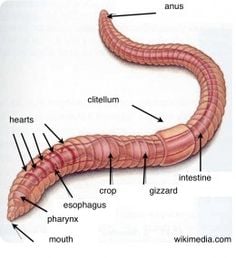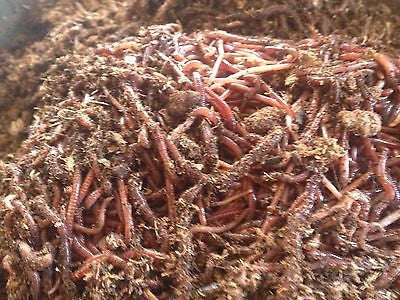Red Wiggler Worms - All-natural Service for Environmentally Friendly Composting
Red Wiggler Worms - All-natural Service for Environmentally Friendly Composting
Blog Article
Red Wiggler Worms Demystified: Unlocking the Secrets of Vermiculture for Greener Living and Nutrient-Rich Soil
In the world of lasting methods for enhancing soil quality and promoting eco-conscious living, red wiggler worms play a pivotal yet often ignored role. These modest animals possess the impressive capability to change natural waste right into nutrient-rich spreadings that act as a potent all-natural plant food. By delving right into the globe of vermiculture, one can uncover a wide variety of advantages that prolong much beyond conventional composting approaches. Comprehending the complexities of taking care of these worms, optimizing their atmosphere, and harnessing their spreadings can result in a greener way of life and healthier dirt for plants to grow.
The Duty of Red Wiggler Worms
Red Wiggler worms play a crucial role in composting systems by efficiently damaging down raw material into nutrient-rich castings. These ravenous eaters take in a range of natural products, such as cooking area scraps, yard waste, and paper products. As they feed, the worms' digestive procedures damage down the natural matter right into a penalty, dark, and nutrient-dense product recognized as worm spreadings or vermicompost.
The spreadings created by Red Wiggler worms are very useful for soil health and wellness and plant development. They are abundant in important nutrients like phosphorus, nitrogen, and potassium, which are crucial for sustaining healthy plant growth. Furthermore, worm castings contain advantageous microorganisms and enzymes that aid enhance soil structure, rise water retention, and improve nutrient uptake by plants.
Advantages of Vermicomposting

Additionally, vermicompost, the nutrient-rich end product of vermicomposting, serves as an outstanding natural fertilizer and dirt conditioner. It enhances dirt structure, boosts dirt aeration, and enhances soil wetness retention. These residential properties add to much healthier plants with stronger origin systems and better resistance to diseases and parasites. Vermicompost additionally enriches the dirt with important nutrients like nitrogen, phosphorus, and potassium, advertising plant development and overall soil fertility.
Furthermore, vermicomposting supports lasting horticulture techniques by giving a chemical-free and natural choice to artificial fertilizers. Red Wiggler Worms. This eco friendly approach not just improves the dirt however likewise helps in reducing dependence on hazardous chemicals, advertising a greener and a lot more sustainable way of horticulture
Establishing a Worm Container
When developing a worm container for vermicomposting, correct configuration is important to make certain the success of the composting procedure. The initial step in establishing up a worm bin is selecting an ideal container. This can be a plastic bin or wooden box that gives enough space for the worms to move and has appropriate water drainage holes to stop waterlogging. Next, a bed linens product such as shredded paper, cardboard, or coconut coir must be contributed to the bin. This bedding offers a comfortable setting for the worms and helps maintain moisture degrees.
After adding the bedding, present the red wiggler worms to the bin. The worms need to after that be offered with food scraps such as fruit and veggie peels, coffee premises, and eggshells.
Consistently keep track of the wetness degrees and temperature in the worm bin to guarantee optimal conditions for the worms. With appropriate arrangement and maintenance, check my blog the worm container will successfully transform natural waste right into nutrient-rich compost for your plants and yard.
Collecting Worm Spreadings
To successfully accumulate nutrient-rich worm spreadings from your vermicomposting system, an organized harvesting approach is important. There are a few crucial steps to comply with to ensure an effective process when it comes time to harvest the worm spreadings. First of all, stop adding fresh food scraps away of the worm container for a number of weeks before gathering. This encourages the worms to migrate to the side with fresh bed linen and food, making it easier to dig the castings from the opposite.

Troubleshooting Common Issues
Determining and addressing typical challenges that may occur during the vermicomposting process is essential for keeping a healthy and balanced and effective worm container. One usual problem that vermicomposters encounter is overfeeding. Including excess food scraps can result in an accumulation investigate this site of moisture and acidity in the worm bin, possibly harming the worms. To stop this, feed the worms in moderation, guaranteeing that the food scraps are sufficiently damaged down before adding more. One more concern is unpleasant smells emanating from the worm bin. Foul scents show anaerobic problems, usually brought on by overwatering or poor air flow. To remedy this, readjust the wetness degrees by adding completely dry bed linens products like shredded paper or cardboard and rise aeration by transforming the bed linens frequently.
Additionally, if the worm population is declining or the worms appear unhealthy, maybe as a result of ecological stressors such as extreme temperatures or pH degrees. Keeping an eye on these variables and making required changes is important for the health of the worms. By fixing these typical problems without delay, vermicomposters can ensure a successful and smooth vermicomposting process while keeping a prospering worm populace.

Verdict
In conclusion, red wiggler worms play an essential role in vermiculture by breaking down natural matter into nutrient-rich soil. Setting up a worm container is necessary for successful vermiculture, and collecting worm read more castings offers useful garden compost for horticulture.
As they feed, the worms' digestion procedures break down the natural matter into a fine, dark, and nutrient-dense product understood as worm castings or vermicompost.
The castings created by Red Wiggler worms are highly advantageous for dirt health and plant growth. Adding excess food scraps can lead to a build-up of wetness and level of acidity in the worm container, possibly hurting the worms.Additionally, if the worm population is decreasing or the worms show up undesirable, it might be due to ecological stress factors such as severe temperature levels or pH levels. Establishing up a worm bin is crucial for successful vermiculture, and harvesting worm castings offers valuable compost for gardening.
Report this page